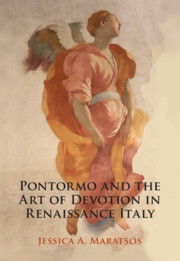Religion and spirituality are present in many organizations in the contemporary United States. While religious studies scholars have traditionally focused on local congregations, some are branching out to explore religion in a broader range of public institutions. Between 1950, when many scholars conceptualized American religion in terms of Will Herberg's classic Protestant-Catholic-Jew and the present, chapels in public institutions including the military, healthcare centers, universities, prisons and airports have expanded and diversified. I focus on airports tracing the evolution of airport chapels from Catholic centered to more multi-faith to more religiously inclusive as unlikely, or perhaps just hidden, analytic mirrors for demographic and cultural changes in American religion. Theoretically, these chapels are case studies that show how the function and appropriate place for religion in public institutions has been improvised and negotiated locally. The clergy, airport personnel and airport chaplains who make decisions about these spaces lack consistent education about the topic and receive inconsistent guidance from laws and policies across city, state, and federal contexts. The chapel spaces that result are, therefore, much more varied than one might expect and shaped as much by fears about what could cause conflict as by responses to actual conflicts.
